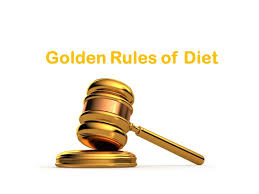 A hybrid between a day spa and doctor’s office has given rise to what is today known as a medical spa. Unlike traditional (ordinary) spas, medical spas operate not on their own but under the full-time supervision and monitoring of one or more licensed medical professionals – but in a spa-like setting. Just as when visiting an ordinary spa, visitors of a medical spa can be pampered with traditional spa services as well as have the rare opportunity of receiving medical services such as laser hair removal, Botox, and medical-grade varieties of skin therapies.
A hybrid between a day spa and doctor’s office has given rise to what is today known as a medical spa. Unlike traditional (ordinary) spas, medical spas operate not on their own but under the full-time supervision and monitoring of one or more licensed medical professionals – but in a spa-like setting. Just as when visiting an ordinary spa, visitors of a medical spa can be pampered with traditional spa services as well as have the rare opportunity of receiving medical services such as laser hair removal, Botox, and medical-grade varieties of skin therapies.
Medical skin care professionals are licensed to operate a traditional spa, as well as a medical spa. This is because they are highly educated and well trained in various medical procedures, including treatment of patients to ensure the highest and best care for every patient. The practice of these medical professionals is governed by different regulations depending on the state where the team is operating. The state regulation also governs the type of medical professional allowed to be an owner of a spa; it could be a Medical Director of that medical spa.
A medical spa offers many services and benefits. Looking at Botox, for example, the Allergan Company’s injectable form of botulinum toxin has gained much popularity over the recent past for reducing wrinkles among those who wish to retain their youthful look for longer. It will rejuvenate the aging face and leave it looking admirable once again. Botox was first FDA-approved and granted permission by the same regulatory authority to “treat” frown lines by the year 2002. Since then, Botox has remained one of the most popular and preferred cosmetic procedures on the market, with escalating popularity. Despite facing competition from similar botulinum toxin formulated products on the market, such as Dysport – which have emerged in the recent past – Botox still remains the most-used/ -preferred form of the drug. Botox is known to smooth facial wrinkles (partly caused by overactive facial muscles) when injected into the skin. Botox works to achieve its medical effects by targeting and interfering with inter-nerve cell signaling, thus, effectively paralyzing the tissues controlled by those particular cells. The result of this is an effectively smooth area, thus slowing down the process of aging.Most People who do anything to look young, beautiful and attractive again.
During the procedure, patients receive numerous small injections – professionally and swiftly administered with virtually no pain – into the target area. This would normally take a few hours and the only typical side effect is minor (usually unnoticeable) redness, sometimes accompanied by swelling around the sites of injections, which can be reduced by use of an ice pack on the affected area and make it disappear within a couple of hours. Sometimes, there may be complications such as drooping eyelid, which are rare and normally resolve within a week or two.
While wrinkles remain the most common cosmetic ailment that Botox treats, medical skin care procedures may also involve Botox in lifting the tip of the nose, widen the eyes, feminize the jaw curve, and even in reducing dimpling in the chin.


 The nutritional needs vary according to one’s gender, age and physical activity. Nowadays it is so easy to go overboard and to overeat as there are tons of delicious foods everywhere.
The nutritional needs vary according to one’s gender, age and physical activity. Nowadays it is so easy to go overboard and to overeat as there are tons of delicious foods everywhere.